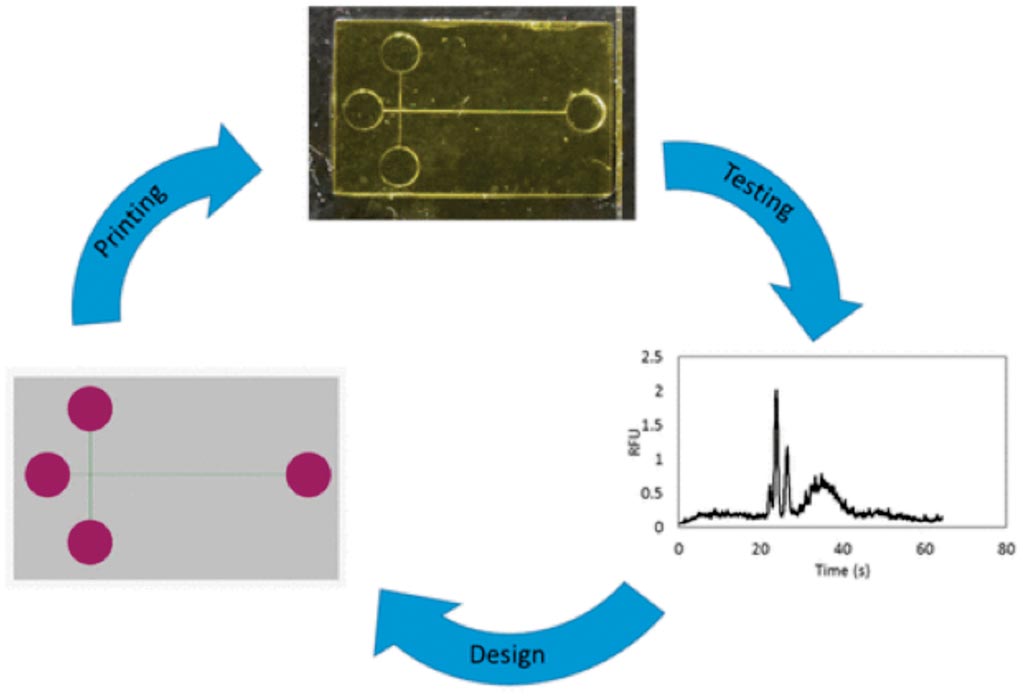3D-Printed Device Detects Biomarkers of Preterm Birth
By LabMedica International staff writers
Posted on 07 Jun 2019
Preterm birth (PTB), defined as birth before the 37th week of gestation, is the leading complication of pregnancy and it affects about 1 in 10 pregnancies worldwide. Preterm infants can suffer complications such as neurological, respiratory and cardiac problems and, in some cases, even death.Posted on 07 Jun 2019
Scientists have previously identified biomarker peptides and proteins in maternal serum that can fairly accurately predict PTB at 28 weeks of gestation. However, existing methods for detecting the biomarkers are laborious or not very sensitive. Now scientists have created a 3D-printed microchip electrophoresis device that can sensitively detect three serum biomarkers of PTB.

Image: A diagram of the 3D-printed microchip electrophoresis device that can sensitively detect three serum biomarkers of preterm birth (Photo courtesy of Brigham Young University).
Biochemists at Brigham Young University (Provo, UT, USA) demonstrated for the first time the creation of microchip electrophoresis devices with ∼50 μm cross-sectional dimensions by stereolithographic 3D printing and their application in the analysis of medically significant biomarkers related to risk for preterm birth (PTB).
The team printed their device onto a glass slide using a 3D printer with a custom resin as the ink. To achieve the best separation of three peptide biomarkers by electrophoresis, they optimized the device design, as well as parameters such as applied voltages and buffer identity and composition. The 3D-printed microchip could detect the three PTB biomarkers in the picomolar to low nanomolar range. They determined that device current was linear with applied potential up to 800 V (620 V/cm). The group optimized device and separation conditions using fluorescently labeled amino acids as a model system and compared the performance in their 3D printed microfluidic devices to that in other device materials commonly used for microchip electrophoresis analysis.
The authors concluded that they had demonstrated for the first time microchip electrophoresis in a 3D printed device of three PTB biomarkers, including peptides and a protein, with suitable separation characteristics. Limits of detection for microchip electrophoresis in 3D printed microfluidic devices were also determined for PTB biomarkers to be in the high picomolar to low nanomolar range. The study was published on May 6, 2019, in the journal Analytical Chemistry.
Related Links:
Brigham Young University












.jpg)
